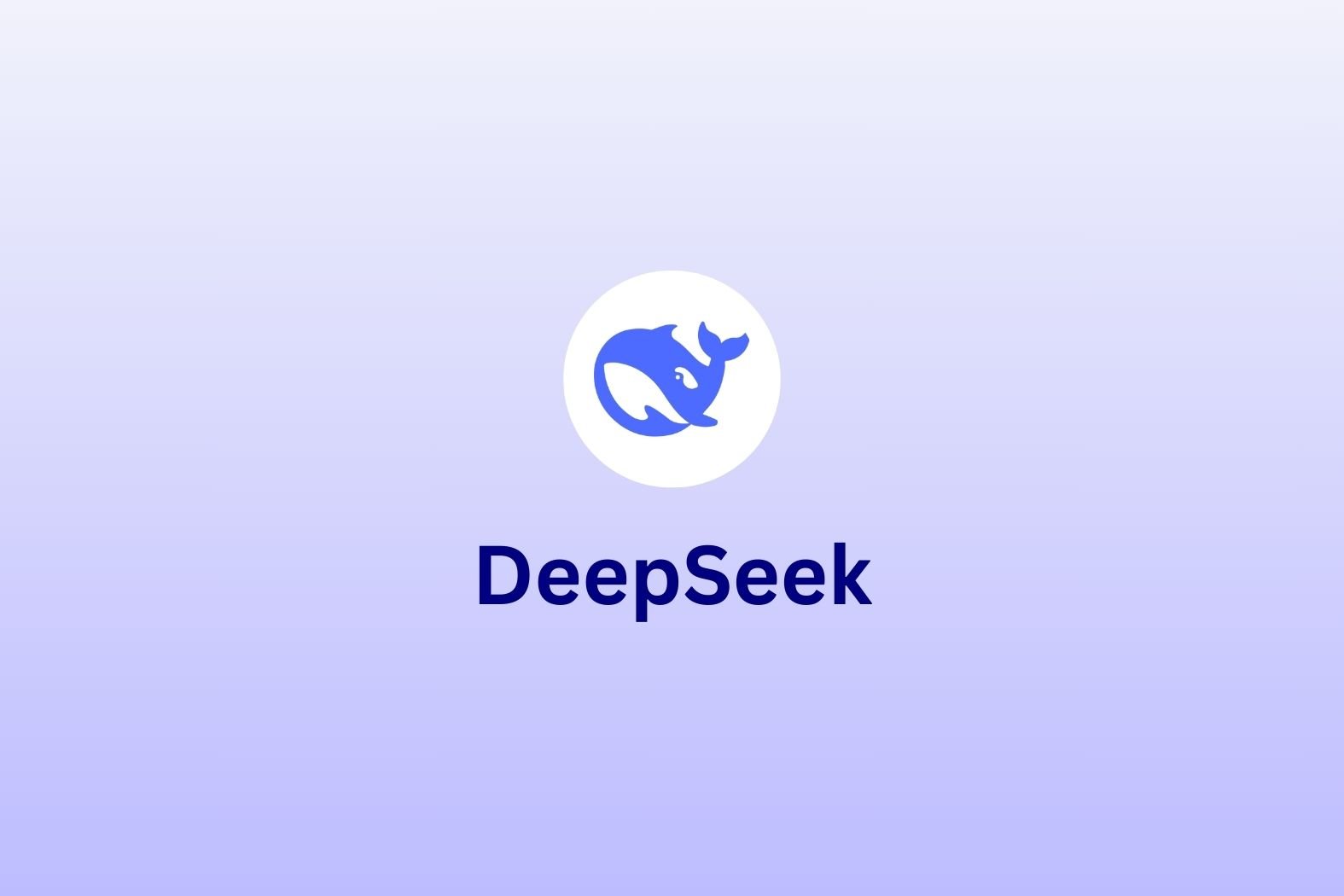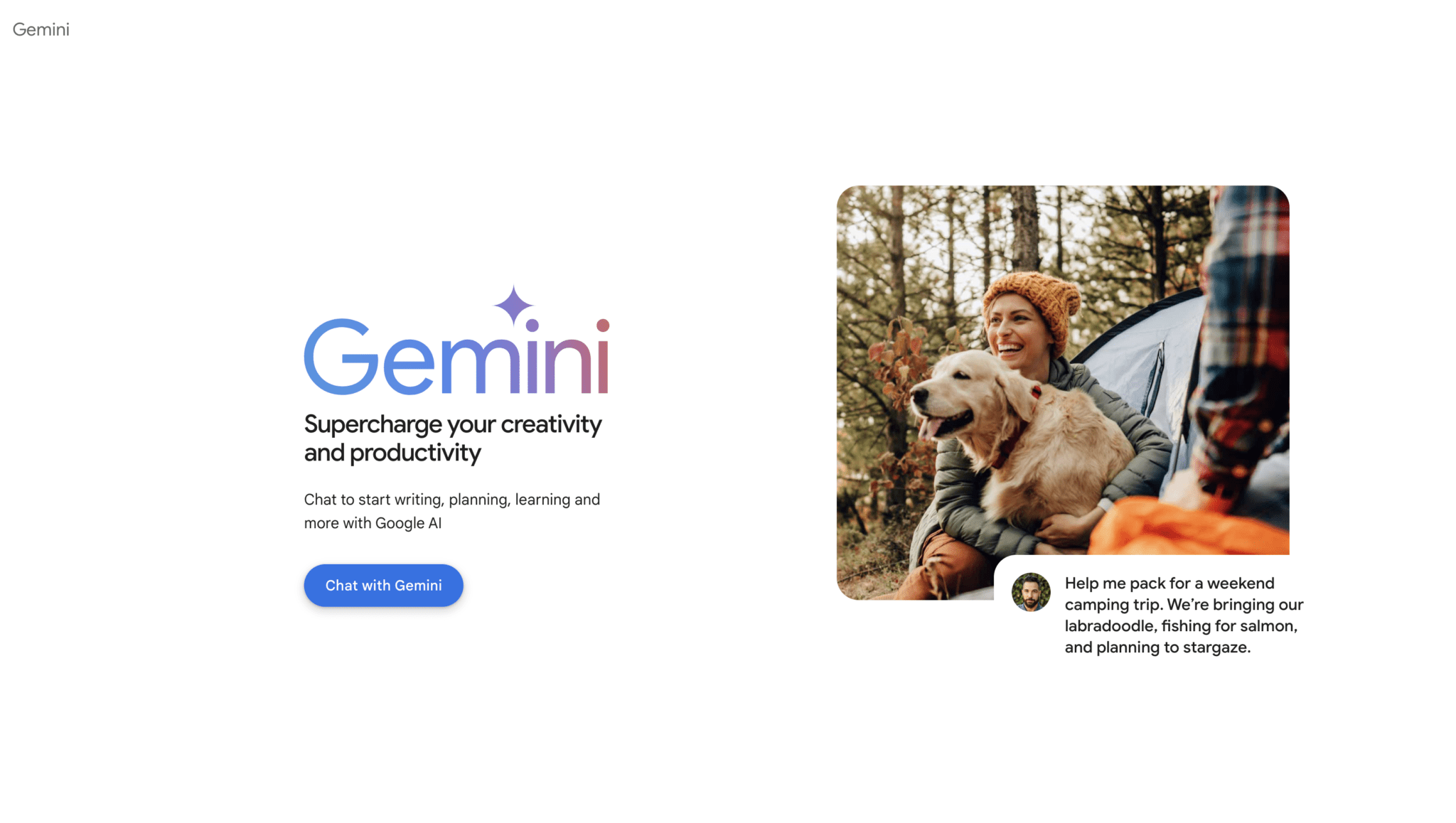If you’ve read any of my previous honest review posts, you’ll know that I’m usually pretty direct. If a tool has flaws, I will point them out. This Fireflies.ai review for 2025 will be no different. After all, it does have some glaring limitations. However, after all my tests, I must say that Fireflies is one of the better tools I’ve tried.
It’s not perfect, especially not on the free plan. With Fireflies, I’ve tested both the Free plan and the free trial of the Business plan, so I have a bit more experience with Fireflies than I do for some of the other tools I’ve tested. Overall, it does the job well.
And in the interest of authenticity, I am a writer for tl;dv, one of Fireflies’ German-built competitors. But to expand on that, I’m a freelance writer. I am not employed by tl;dv. I try to eliminate bias as much as possible when testing the tool, using it both personally and for my small business. My experience with honest reviews of AI meeting assistants also allows me a broad view of the overall market: I’ve tested everything from Granola to Demodesk, Otter to Notta. I know what works, what doesn’t, and what everyday users expect from an AI notetaker.
So without further ado, let’s jump into this Fireflies review.
TL;DR: Is Fireflies Worth It?
Fireflies is a capable AI notetaker with strong transcription, useful post-call workflows, and one of the smarter assistants I’ve tested. But key features like video recording are locked behind higher-tier plans. There’s also no automatic language detection or localization, which are huge drawbacks for multilingual teams. Additionally, it needs access to your calendar. If you don’t give it, you don’t get access to Fireflies.
Best for: Simple meeting insights and streamlined notes.
Not great for: Multilingual teams or those wanting max value on the free plan.
The verdict: Solid on paid plans, but the price makes it questionable value for some.
For the full Fireflies.ai review, keep reading. Or if you’d rather jump straight to the pricing, click here to skip to our Fireflies Pricing Calculator.
My Honest Fireflies Review: What I Learned From Testing the Free Plan
Getting started with Fireflies was fairly easy. Here’s how I got set up.
How Easy Is It to Onboard onto Fireflies.ai?
Fireflies had a relatively smooth onboarding process. I didn’t need to download anything or install any extensions. There are options to get a Chrome Extension and a mobile app, but you don’t either of them to actually use the tool, which is great.
One annoying hiccup during the onboarding was the upsell at the end. They offered a free trial for the Business plan which I considered, but only after clicking on it did I realize that they would bill my card over $200 after the free trial ends.

After reading horror stories about subscription payments for Fireflies (which I’ll share later), as well as other meeting assistants, I decided not to bother (however I did somehow qualify for a free trial for the Business plan via a different email – no card required). Talking of which, there are no restrictions on which type of email you can use on Fireflies. Both personal and work emails work.
Before starting, Fireflies asks you to confirm your settings. Here’s the kicker: if you don’t want the generic settings (invite Fred to every call and send recaps to all participants), you don’t get unlimited transcription. The unlimited free plan (that I signed up for) is entirely dependent on which settings you choose, and, as far as I can tell, this isn’t mentioned anywhere until you actually get to this screen.

Like most meeting recorders, Fireflies requests access to your calendar when you sign up. By granting it access, it can automatically join your scheduled calls, even if you’re not present yourself.
However, there’s a BIG drawback here that sneaks quietly under the radar. If you don’t give Fireflies permission to access your calendar, you’ll get sent back to the sign-up screen. There’s no error message. No reason given. You’re just taken back. And if you try to sign up without giving Fireflies permission to your calendar a second time, you’ll face the exact same problem.
Turns out, it’s intentional. If you aren’t willing to give Fireflies access to your calendar, they aren’t willing to give you access to their meeting assistant. It’s as simple as that. It’s a bit of a crazy workaround, but there’s no opt-out. If you want to use Fireflies, it needs access to your calendar. It just doesn’t tell you about it.
Over on the dashboard, there’s an option to view upcoming meetings. From there, you can decide whether you want to admit it to any specific meeting or not. You can also do this via email invitation to [email protected] or by manually inviting it to a live call (simply paste a link).

Fireflies Features: How Is the Live Transcription?
When I first used Fireflies, I didn’t realize it can also transcribe in real-time. If it joins your meeting automatically, there’s no pop up or anything obvious for you to view the live transcript. However, when inviting it manually and leaving the browser open, it transcribes.
This is also something that’s possible (and simpler) with the mobile app or Chrome extension. When I did manage to find the live transcription, it was difficult to figure out how it worked. For starters, I was on a call so I couldn’t pay too much attention to it. What made matters more confusing though was that there are two tabs, one for notes and one for transcript. At first, I thought it wasn’t transcribing at all because I was on the note tab and they only appear every now and then when a certain topic has been detected.
The live transcription was happening as it turns out, and it was fairly accurate, but way too fiddly to actually be useful in any way. Live transcription is more useful for podcasts or lectures in my opinion, however, it was nice to be able to Ask Fred about the conversation while it was still ongoing.
Is It Easy To Organize Your Meetings?
In busy organizations, meetings can get lost in the blink of an eye. When there are dozens of new recordings added each day, there needs to be an intuitive meetings library for you to quickly and easily find what you’re looking for. Fireflies has one of the best experiences in this regard that I’ve found so far.
You can see in the “Upcoming Meetings” screenshot above, and again in a closer (but partially redacted) version below. Fireflies lists the title of the meeting, the participants, the date and time, and then several emoji-points that cover the main topics in a simple sentence. This allows you to scan over the entire meeting’s contents in a handful of seconds.

The only thing that would make this meeting organization better is if it had a video thumbnail like tl;dv. That way, you don’t just see the notes, you also can catch a glimpse of what the call looked like. However, Fireflies is notorious for having video playback reserved for their Business plan users so this wouldn’t work for lower tier plans anyway.
Are Fireflies’ AI Notes and Summaries Good Quality?
Fireflies’ AI notes are generally pretty good. I’m half-used to testing out AI meeting assistants and getting laughable results, but Fireflies not only provides decent notes, it displays them in a way that’s easy to digest.
I say “decent” because Fireflies still makes errors. In this example below, it mentioned that we were planning a trip in 2024. This call was recorded in 2025 so unless Fireflies provides the secrets of time travel, it’s a little off the mark.

Despite the odd mistake here and there, it’s a concise list of bullet points that covers the conversation at a glance. Below the overview, you get more detailed notes on each specific topic discussed, along with timestamps so you can easily jump back to specific parts.
Meanwhile, on the overview, if you click the little arrow that appears next to each of the bullet points when you hover over them, you’ll get the option to “get more details.”
Clicking this will generate three more sub-bullet points beneath the one you expanded. These do what they say on the tin, expanding on a specific section. Here’s an example.

As you can see, while it’s expanded the bullet point, it hasn’t added anything substantial. This might not prove to be that important in the grand scheme of things, but it’s a subtle addition that helps you catch up on meetings (even more so when they’re business related).
How Is The Fireflies.ai Feature AskFred?
AskFred is actually one of the best AI assistants I’ve used in all my testing experience. It felt like a mini ChatGPT within the Fireflies platform that has access to your meeting, but also a wide range of pre-trained materials.
In one example, I had a call with a client who mentioned a TED talk. They couldn’t remember the name of the TED talk so they just described it to me and said I’d be able to find it if I searched. Instead of searching (so 2024), I asked Fred. Here’s what he said.

So just based on the context from our conversation, Fred was able to determine which TED talk my client was referring to. I was quite impressed with this as some of the AI tools I’ve used in the past have been fairly useless.
The one downside about Fred is that it still isn’t capable of assessing multiple meetings at once. In tl;dv, for instance, you can feed the AI an entire batch of up to 100 meetings and it will understand all of them, empowering it to assess trends, patterns, and workflows across your entire team. It can also analyze one specific person’s calls to give super detailed feedback on their process. This is particularly useful for sales managers, reps, and CS agents.
However, Fireflies lacks this feature, which you’d think should be fairly doable for Fred. It also lacks the ability to schedule recurring reports like tl;dv, meaning you can’t automatically get Fred to analyze lots of calls and deliver them to your inbox on autopilot.
Is Fireflies.ai’s User Interface Easy to Navigate?
Overall, Fireflies’ UI is pretty straightforward. It can be a bit confusing, especially for all the team features. For instance, Fireflies lets you assign tasks on the platform, creating a tick box list for action items that lets you tick them off as you complete them.
Similarly, the Meetings tab is uglier than the Home tab. The Home tab has a “My Feed” section which is where the meetings are displayed nice visually (as I mentioned earlier). But under Meetings, there are three sub-categories (My Meetings, All Meetings, Shared With Me) and these display the meetings in a clunkier format. There are no notes there and no video thumbnail either, making it just an awkward list of dates, times, participants, and titles.
Then there are a whole bunch of additional tabs that I’m fairly sure are unnecessary. Meeting Status, for example, simply records when Fireflies joined and when it was rejected from calls. Playlist allows you to organize multiple soundbites and share them with teammates, while Contacts just shows people you’ve had conversations with. None of these are essential, though Playlists is at least useful.
Does Fireflies Have Plenty of High-Quality Integrations?
Fireflies gets a lot of praise for its integrations. It has a lot of native integrations, which is always good, but it also integrates with Zapier, allowing you to connect with thousands of third party apps.

On the free plan, I didn’t get to use integrations. They’re unlocked on the Pro plan so I never tested them personally. However, I’ll take a look at some user reviews soon where they do use Fireflies integrations.
From a glance, it looks like they have a lot. And from what I’ve heard, they tend to be pretty good. With CRM systems, for instance, you can automatically fill out the correct fields without lifting a finger. The automation does it for you. This is something offered more and more by AI meeting assistants lately, including tl;dv and other key Fireflies competitors.
Real Talk: How Is Fireflies for Privacy and Security?
When Fireflies enters the call, it announces to meeting participants that it’s recording. While users should gain consent before inviting it, it’s a direct way of informing everyone in the call that it’s being recorded. Not only that, but meeting participants can talk with Fred, Fireflies’ AI assistant, in the call chat too. They can ask for it to catch them up, or ask it other questions and it’ll answer live.
I tried talking with it but found it distracted me from the conversation. Still, it’s a nice thing to have if you need it.
As for security, Fireflies has all the staple certifications. It’s SOC2 and GDPR compliant, however, it is notably not compliant with the EU AI Act. Fireflies is an American company and its AI uses sentiment analysis, which is outlawed by the EU AI Act. This may be cause for concern for European businesses that need to comply with local regulations. For a European-based alternative that has even stronger security protocols, you might want to check out tl;dv.
Unlike some tools like Notta and Granola, Fireflies doesn’t train its AI models on your data.
Fireflies.ai Pricing: How Much Does It Cost?

So now you know my opinion, how much does Fireflies actually cost? Let’s break it down.
Fireflies has four plans:
- Free ($0)
- Pro ($10)
- Business ($19)
- Enterprise ($39)
All prices are per user per month when billed annually.
Fireflies’ free plan seems great: unlimited transcription, 800 minutes of storage, and limited AI summaries. However, I found out the hard way that the asterisk near the “unlimited transcription” actually means you’ve got to invite all your meeting participants to Fireflies after every single call. Oh, and you can’t deny Fireflies entry to any calls. If you want unlimited, then it will join all your calls whether you like it or not.
The Pro plan is an affordable plan that removes the asterisk and lets you have unlimited transcription regardless of your sharing settings. It also unlocks unlimited AI summaries and integrations.
The Business plan nets you unlimited storage, as well as video recording playback (finally). Enterprise provides the usual: SSO, HIPAA compliance, private storage, and more.
For a more detailed breakdown of how much Fireflies will cost you specifically, you can use the Fireflies pricing calculator that I made to make your life easier. Simply select the number of seats you require, whether you want a monthly or annual subscription, and choose your plan. The calculator will display your estimated monthly and annual costs, as well as what you’ll get in your chosen plan.
Fireflies Pricing Calculator
What Do Everyday Users Think of Fireflies?
While I use Fireflies from time to time, it’s mainly to keep up to date with new features. I don’t use it regularly for business calls. So let’s take a look at some users that do.
I scoured several different review sites to gather user feedback on Fireflies. Here’s what I could find. Fireflies scores:
- 4.8/5 from 709 reviews on G2.
- 4.4/5 from 253 on TrustPilot.
- 4.1/5 from 64 reviews on Chrome Web Store.
- 4.4/5 from 54 reviews on ProductHunt.
- 4.3/5 from 12 reviews on Capterra.
That gives Fireflies a weighted average of 4.64/5 from 1092 reviews. Not bad.
Here’s one of the better reviews to get us started.

This review by business development manager Ken S. on G2 calls Fireflies “a quality of life change that totally revamps meetings.” Ken is pleased with the way it summarizes and transcribes meetings, but notes that that’s not even the best bit. The way it suggests deliverables and follow-up action points that make it so useful.
Ken is currently on the free plan but will be upgrading to a paid plan soon. He also lists a few downsides, like the weak speaker identification (supposedly only works when a speaker identifies themselves) and issues with getting the app to join MS Teams calls.

Charlotte S. is a business owner that loves Fireflies. She’s “impressed by how accurate the notes are.” It allows her to concentrate 100% on the meeting without having to manually fiddle about with notes. She hasn’t found anything she doesn’t like yet.
This is a positive pattern for Fireflies, and, to an extent, I have to agree. It is a solid tool that does its specific job very well. However, its shortcomings aren’t in transcriptions and notes, but in what could be. It has no multi-meeting intelligence, no automatic language detection, and limited features for sales teams, making it a good notetaker if that’s all you need, but unable to take your meeting intelligence to the next level.
While it lacks versatility in the business sense, there are plenty of users that use Fireflies outside of business. One user named Carolina, for example, uses Fireflies for book clubs. She rates it 4.5/5, providing numerous advantage examples as well as several limitations: errors in speaker names, needs to be supervised, relies on audio quality, lack of context awareness.
Another verified user complained about being charged for three months on a Business plan “without clear consent, usage, or even a single billing email or invoice.” Additionally, this user found that the Notion integration never worked and the customer support would only refund one month, even with proof that the user never actually used it.

Over on TrustPilot, Fireflies has largely positive reviews, especially considering TrustPilot is most often used to report distrust in companies. Here are four reviews from the last week at the time of writing.

Three of the four reviews are five stars, while the other is 4/5. Sophie claims to use Fred in every meeting and that she would be lost without him. Arturo says it “saves tons of time” while Tol says the “price-point is very affordable.”
Gill, despite ranking it lower, still had a “great experience” but thought it “could be improved by giving task lists and the ability to export those to either the API or things like Google Tasks.” Again, this is an example of Fireflies falling short not because of its existing features, but for its lack of features.
Over on the Chrome Web Store, Fireflies receives mostly positive reviews too, but one stands out by drawing attention to a critical flaw: localization.

Artem questions why the Fireflies’ platform’s interface is still English only. They say the product is “amazing” and that the Russian speech recognition works surprisingly well (which I can also partially vouch for, so long as you manually select Russian in advance), but it’s 2025 and “basic UI language support (at least for the top languages) shouldn’t be that hard.”
This, again, is hitting Fireflies where it’s weakest. Not in what it does, but in what it doesn’t do. For global teams with employees from different countries, an English-only interface is a huge drawback. tl;dv, for instance, has a fully localized platform in 7 different languages, making sure it can be widely used across the world.
So How Does Fireflies Stack Up to the Competition?
You might be wondering how Fireflies fares against its competitors like tl;dv, Otter, Fathom, and Tactiq. You’re not the only one. But to save you hours of research, I created an interactive table where you can check off which features you need and see which tool provides them.
Go ahead and give it a try.
Compare Fireflies With Other Meeting Assistants
More filters
Using the table above, you can really compare Fireflies with Fathom, Otter, tl;dv, and Tactiq across all plans.
Feel free to bookmark this page and come back to it whenever you wish to compare. I’ll strive to keep it updated with new releases.
Fireflies.ai Review Verdict: Is It Worth Your Money?
You can see from the Fireflies reviews above (and many of the others) that it gets the basics right. It transcribes well, takes solid notes, and displays them in a way that’s easy to work with. Users can ask Fred anything about their meetings to get quick and detailed insights. You can also set up post-call workflows with your CRMs or other work tools to get your notes where they need to be (if the integrations actually work).
However, this is all Fireflies offers. If you want video recording, you need the Business plan. If you want multi-meeting memory and context awareness, it’s tough luck. Fred can only comprehend one meeting at a time. If you want automatic language detection and a localized platform in different languages, you’re not going to find it with Fireflies. Neither will you be able to find advanced sales coaching features, objection handling tips, or any form of revenue intelligence or deal pipeline management.
In short, it’s good at what it does, but its scope is too limited to be majorly useful for businesses. Individuals might benefit from top quality notes and transcripts, but businesses need their conversational intelligence to do a little bit more work for them, and Fireflies can’t help here.
I personally like Fireflies, but I think it falls short of being useful for businesses compared to tools with a more competitive feature set. tl;dv, for instance, makes up for most of Fireflies’ shortcomings. It’s EU AI Act compliant, making it a stronger choice for European-based companies. It’s got unlimited video recordings baked into the free plan (without an asterisk). And it’s even got multi-meeting memory and context awareness so the AI can understand your entire call history, sales coaching features that enhance conversational insights to help reps close more deals, and automatic language detection in over 40 languages, plus a localized platform in 7 languages, making it a much better fit for big multinational teams.
For a detailed comparison, see our in-depth guide: tl;dv vs Fireflies.
FAQs About Fireflies.ai
What is Fireflies.ai?
Fireflies.ai is an AI meeting assistant that joins your video calls, records them, transcribes conversations, and generates AI-powered notes. It can be invited manually or auto-join scheduled meetings through your calendar.
Is Fireflies.ai free to use?
Yes, Fireflies offers a free plan that includes unlimited transcription, but it comes with a big asterisk: you must allow Fireflies to join all your meetings and send recaps to every participant. Otherwise, the free plan is limited to 10 transcriptions per month.
With the free plan, you also get limited AI capabilities that reset each month.
Does Fireflies support video recording?
Yes, but only on the Business or Enterprise plans. If you’re on Free or Pro, you won’t have access to video playback. It’ll just be audio and text-based transcripts.
Is Fireflies good for multilingual teams?
Not really. While Fireflies offers transcription translation in more than 100 languages, it does not offer automatic language detection or UI localization.
Users must manually select a transcription language before each call, and the interface is only available in English.
How accurate are Fireflies’ transcriptions?
Fairly accurate, especially for well-recorded calls with clear audio. Minor mistakes may occur, but it performs well overall compared to other AI notetakers.
Who is Fred, the Fireflies assistant?
Fred is Fireflies’ AI assistant, comparable to a mini ChatGPT trained on your meeting. You can ask Fred follow-up questions, request summaries, or clarify what was discussed. You can even do all this live during a call.
Can Fred analyze multiple meetings at once?
Unfortunately, no. Fred can only analyze one meeting at a time. Unlike competitors like tl;dv, Fireflies doesn’t offer multi-meeting intelligence or trend analysis across conversations.
Is Fireflies secure and GDPR compliant?
Fireflies is SOC 2 and GDPR compliant, but it is not compliant with the EU AI Act due to its use of sentiment analysis. This may be a concern for European businesses that require strict AI compliance.
Does Fireflies train its AI on your data?
No. Unlike some competitors, Fireflies explicitly states that it does not train its AI models on your conversation data, which is a plus for privacy-conscious users.
What are the main drawbacks of Fireflies?
No video recording on free/Pro plans
No multi-meeting memory or trends
No automatic language detection
English-only interface
Confusing onboarding upsells
Some users report billing issues and poor customer support
What’s a good alternative to Fireflies.ai?
If you’re looking for:
EU AI Act compliance
Automatic language detection
- Localized UI in different languages
Multi-meeting intelligence
Unlimited video recordings on the free plan
Sales coaching and CRM sync
… then tl;dv is a stronger option, especially for global or enterprise teams.





